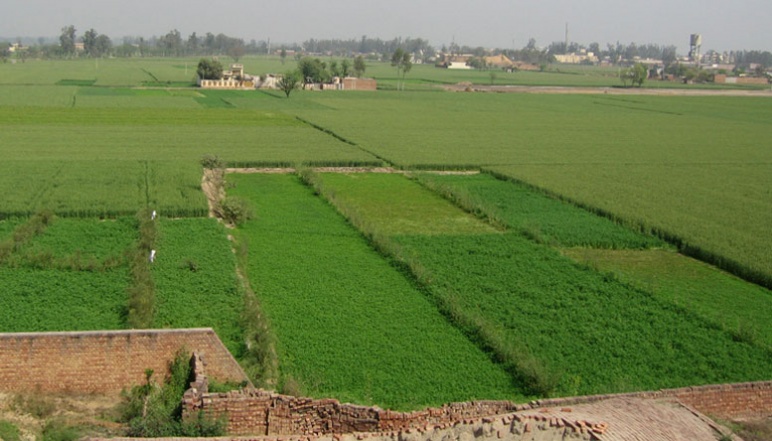Our Research Sustainable agricultural planning for small farm holders in the Bist Doab region of Punjab

View of a farm in Punjab, India (Credit: deepay / CC BY (https://creativecommons.org/licenses/by/2.0)
Principal Investigators
Saurabh Amin
- Associate Professor of Civil and Environmental Engineering
- Department of Civil and Environmental Engineering
Ickkshaanshu Sonkar
- Assistant Professor
- Department of Civil Engineering, Indian Institute of Technology Ropar
Reet K. Tiwari
- Assistant Professor
- Department of Civil Engineering, Indian Institute of Technology (IIT) Ropar
Challenge:
How can we evaluate the long-term impact of groundwater table trends in the Bist Doab region (Punjab, India) on the ability of the region’s smallholder farmers to productively participate in agricultural activities?
Research Strategy
- Collect data on land ownership, groundwater access, and preferred cropping patterns in select districts of Bist doab region
- Conduct a statistical analysis to evaluate prevalent and expected future trends of groundwater usage in Bist doab inter-basin aquifer
- Generate predictions of the spatio-temporal patterns of irrigational draft and its impact on the depth-to-water table at specific, pre-identified sites over a period of 15-30 years
Project description
Punjab, a northwestern state of India, occupies only 1.53% of the total geographical area of the country, but produces about two-thirds of its cereal grains. In the last three decades, groundwater has become the most important source for irrigation in Punjab as well as across the rest of the country. However, this intensive use of groundwater is leading to resource depletion, salinization of existing supplies, and high energy use. Policy solutions are being employed by local governments; however, the new constraints and regulations are having disproportionately negative effects on smallholder farmers. This project aims to address the question of how to allow smallholder farmers to productively participate in agricultural activity while supporting the sustainable management of groundwater resources. The research team, working across MIT and IIT Ropar (a research university located in Punjab), will use on-the-ground surveys along with groundwater simulation and planning tools in an attempt to better understand and address this problem. By focusing on patterns of land ownership, groundwater sharing agreements, access to energy, and the social and cultural factors affecting farmers’ work and crop choices, the team will develop a systematic procedure to predict groundwater use and project water table resiliency. Ultimately, they seek to inform solutions for policy and practice that take into account the needs and behaviors of smallholder farmers and their communities.
Outcomes
- Used a calibrated groundwater flow model to simulate the groundwater flow and pumping (extraction) patterns in the region
- Conducted a survey of 408 farmers and recorded and analyzed responses to gather information about demographics, land ownership structure, prevalent cropping pattern, their problems pertaining to water access, and their response to the continuous groundwater depletion
- Findings showed that 89.16% of farmers with land holding above 5 acres grow high water-intensive crops such as paddy and sugarcane as compared to 79.66% of small holder farmers
- A positive correlation was observed between size of landholding and depth of well used to extract groundwater, and a moderate concern about the declining water table was seen among farmers.
- 57.22% of small holder farmers and 39.86% of big farmers responded that they would decide the cropping pattern based on minimum support price (MSP) provided by the government, indicating the vital role that the government’s MSP policy could play in shifting the cropping pattern towards low water-intensive crops
Additional Details
Impact Areas
- Water
Research Themes
- Modeling & Data Analytics
Year Funded
- 2020
Grant Type
- India Grant
Status
- Completed



